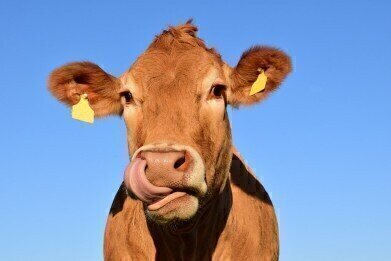Air Monitoring
Where Does Methane Come From? - Agriculture
Feb 21 2022
Methane is a gas which naturally occurs in all four of the alchemical elements in our environment. However, concentrations of this gas have skyrocketed in the last couple of centuries, with current levels over double those prior to the Industrial Revolution. This is an unequivocal sign that anthropogenic activity is responsible for the upsurge in methane emissions.
Although methane has a wide variety of sources, uses and methods of detections, agriculture and dairy farming is undoubtedly one of the most important. Indeed, when we heard the word methane, cows might be the first thing that springs to mind. Other livestock such as sheep and goats are contributors to a lesser degree, while other agricultural practices, such as stubble burning and rice paddy cultivation, are other sources of the greenhouse gas. Here’s a closer look at them in more detail.
Livestock
Cows, sheep and goats are ruminant animals, meaning they host millions of tiny microbes in their stomachs which aid in digestion. While these bacteria are helpful to the livestock’s health, an unfortunate by-product of their functioning is the creation of methane gas, which is expelled into the atmosphere through the animal’s mouth and rear end.
Given that there are 1.4 billion cattle on the planet, it should come as little surprise that the farming sector is responsible for a cumulative 90 million tonnes of methane production each year. In real terms, that’s equivalent to around 40% of all human methane emissions, making livestock one of the biggest contributors to atmospheric methane concentrations.
Stubble burning
Stubble burning refers to when farmers intentionally burn off the crop residue which remains behind after the previous yield has already been harvested. It is done to remove herbicide-resistant vegetation, deter termite infestations and ready the terrain for the coming season. However, it can have devastating environmental consequences, which is why it is banned in many countries.
This is due to the fact that incomplete combustion of organic matter results in the emissions of several harmful gases, including carbon dioxide, nitrogen dioxide, sulphur dioxide and methane, as well as contributing to air pollution in the form of particulate matter. Despite its illegality in some jurisdictions, it is still widely practiced around the world and is thought to cause as much as 10% of all human methane emissions.
Rice paddies
Cultivation of rice is a staple of the Asian diet and in fact, scientists believe that they can track the practice back to its roots some 5,000 years ago. This is because analysis of prehistoric air trapped inside bubbles inside Arctic ice planes reveals a proliferation of methane in the atmosphere at this time.
So why, exactly, does growing rice create methane? Well, rice paddies share much in common with a major natural source of methane emissions: wetlands. When the terrain is flooded, the lack of oxygen provides a fertile breeding and feeding ground for certain types of microbes that have evolved to expel methane instead of CO2. With an estimated 31 tonnes of methane emitted by rice paddies, it’s believed they’re responsible for around 9% of human methane output.
For those interested in learning more about the techniques of methane emissions monitoring in agriculture and elsewhere, the upcoming Industrial Methane Measurement conference this summer promises to hold much valuable insight. Taking place in Rotterdam in the Netherlands on the 8th and 9th June, the event is open to all.
Digital Edition
IET 34.2 March 2024
April 2024
Gas Detection - Biogas batch fermentation system for laboratory use with automatic gas analysis in real time Water/Wastewater - Upcycling sensors for sustainable nature management - Prist...
View all digital editions
Events
Apr 30 2024 Melbourne, Australia
Apr 30 2024 Birmingham, UK
May 03 2024 Seoul, South Korea
May 05 2024 Seville, Spain
May 06 2024 Minneapolis, MN, USA


















